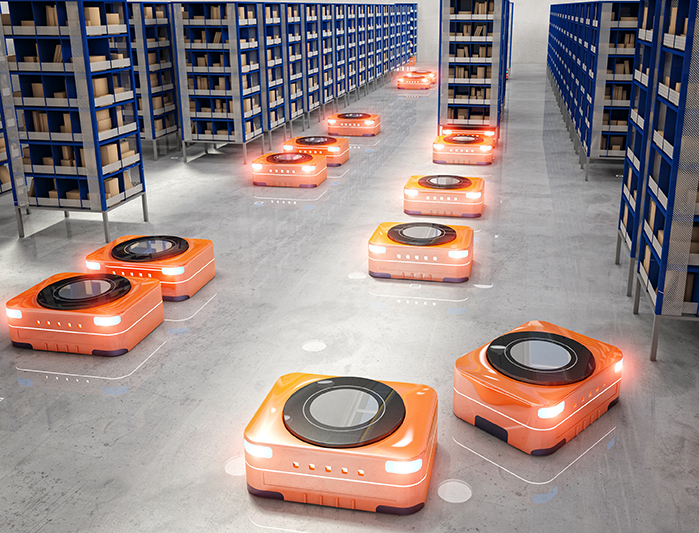Empowering Warehouse Automation
with Wireless Networks
By: Don Gilbreath

Organizations’ indoor operations are under mounting pressure to advance their efficiency and productivity while lowering overhead costs. The pandemic has made the population’s purchasing behavior more virtual even as labor has become less available. In 2021, e-retail sales surpassed 5.2 trillion U.S. dollars worldwide, and this figure is expected to reach new heights in the coming years. Unsurprisingly, the pace of warehouse production is evolving, meaning more innovative processes and operations must be adopted to keep up with this demand.
Indoor industrial enterprises must now operate at peak efficiency 24 hours a day to support customer demand in the current and upcoming climate. Only by harnessing the most optimal and reliable next-generation technologies can operations thrive. By becoming more efficient and productive, operators can transform operational effectiveness and generate increased return on investment (ROI). This is why many modern warehouse operators are turning to advanced applications such as robotics and automation. However, introducing these new technologies does not wholly overcome the increasing demand of warehouse use—what is often overlooked is the role wireless connectivity plays. Networking provides foundational support for warehouses to remain at or reach peak efficiency. Traditional fixed networking infrastructure has challenges when it comes to the enablement of continuous machine-to-machine (M2M) wireless connectivity.
Augmenting manual work
Warehouse operations can be hazardous to personnel if certain tasks are not performed correctly. Manual processes also risk human error, resulting in costly inventory loss and putting workers in unsafe predicaments.
Undoubtedly, technology is making many warehouse processes more efficient as it is augmenting the work of humans. Introducing automatic equipment, such as robots and drones, in warehouse facilities can make dangerous, complex, or repetitive processes autonomous to improve safety and quality throughout the fulfillment process. Space optimization is another benefit of warehouse automation, allowing warehouses to maximize the use of vertical space by storing items in higher locations that are typically difficult for humans or forklifts to reach. Drones, cranes, and some automated storage and retrieval systems (ASRS) solutions make accessing these higher storage locations easier, so warehouses can monetize more cubic feet.
Overall, robotics for automation offers tremendous benefits for stakeholders who deploy them wisely. However, robots are not completely taking over the vital work of humans in the warehouse industry. Automating tedious, manual tasks frees workers to focus on more complex tasks.
These automation benefits are nothing without a strong and consistent wireless network to retain connectivity. Enterprise Wi-Fi, sufficient for office connectivity, falls short with its limited range, leaving gaps in the continuous, uninterrupted communications indoor warehouses and factories require. Machines can stop functioning when disconnected, and when they do, this can completely halt production or reduce the benefits automation provides by having to resend the same information multiple times. Productivity, efficiency, and safety gains are negatively impacted when communication to and from the machinery breaks down.
The core solution is figuring out how to maintain dependable, reliable, and wide-ranging communications across all aspects of an automated warehouse and acknowledging that a stable and efficient wireless connection can prevent these common issues. This continuous mobile connectivity is a must for any warehouse, and failure for this to work consistently throughout the entire warehouse can cause costly delays. Focusing on coverage, resiliency, mobility, and M2M communications is key to overcoming traditional wireless challenges in a warehouse environment.
As technology advances, so does the need for faster connectivity, networks, and communications worldwide. Due to this, automated equipment is becoming the norm for warehouses. This need has been increasing since the turn of the century with the entry of artificial intelligence (AI) and the Industrial Internet of Things (IIoT).
Obstacles preventing warehouse automation
Wireless communications use radio frequencies (RF) to communicate, and metal is very bad for RF as it cannot go through it but must go around it. Using 5G worsens the problem as it uses millimeter wave (MmWave) frequencies, which are very short distance and any obstruction halts communication. In many cases, the only way to



















